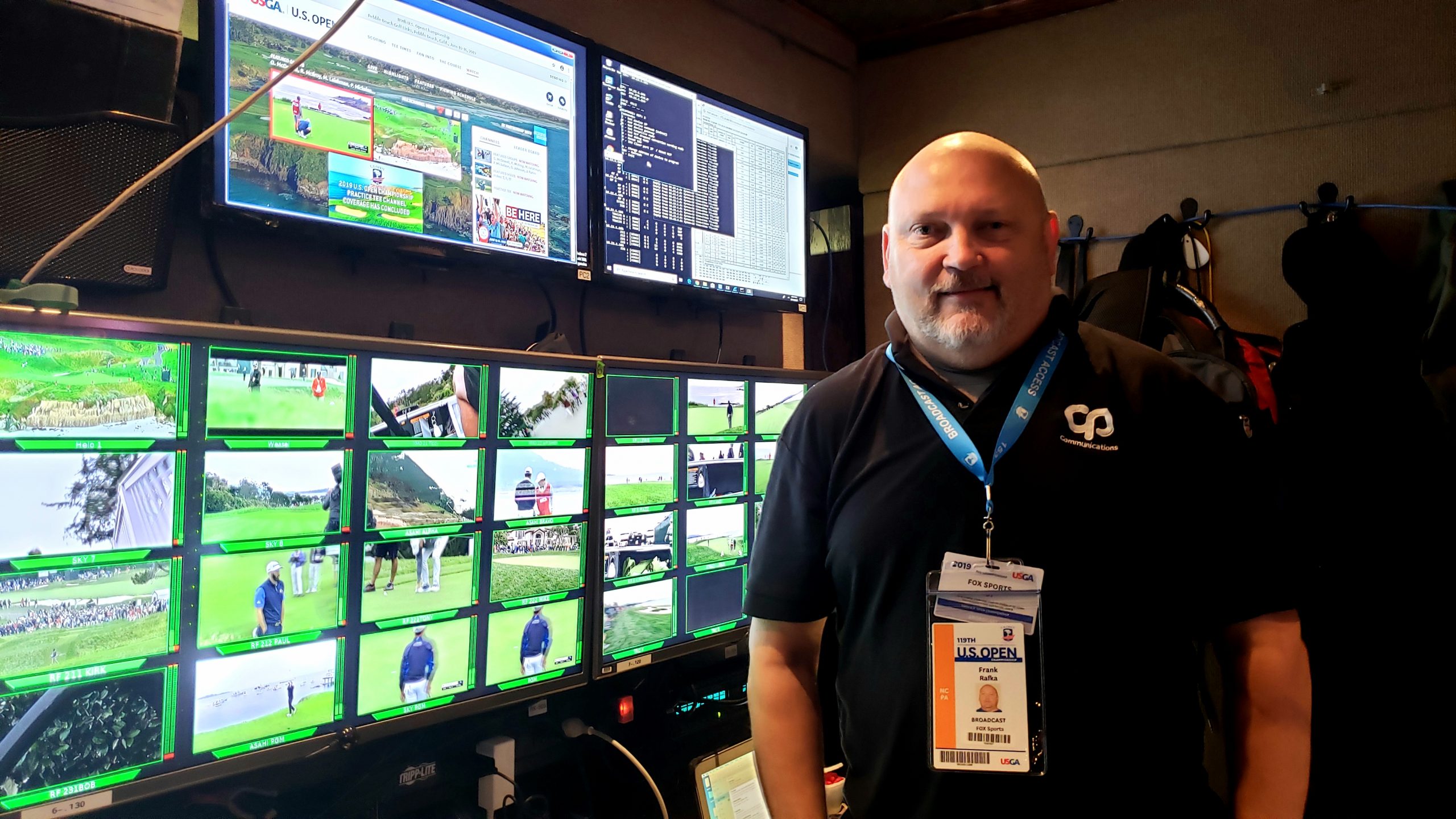5G Puts Bonded-Cellular Solutions on the Table for Comms
CP Communications deploys bonded-cellular wide-area comms for sports production
Story Highlights
The migration toward IP-based audio-signal transport continues, but a parallel pathway has also evolved: cellular bonding, which allows two or more cellular modems to be combined in a way that enables the end user to utilize the combined bandwidth. Cellular bonding transmits live streams via multiplexed cellular signals when Ethernet or Wi-Fi isn’t available. Instead of expensive satellite transmissions, multiple cellular modems are used to combine 3G, 4G, LTE, and other cellular signals to boost connectivity.
CP Communications has staked much of its future on bonded cellular: in the case of audio, deploying wide-area comms over cellular using Unity Intercom on ruggedized, application-specific Sonim phones, replacing traditional localized intercom headends.
CP has deployed this configuration for comms on several broadcast sports productions, but the showcase and proof-of-concept instance has been the New York City Marathon, where the CP comms system faces its biggest challenges, in terms of both sheer area coverage and availability of cellular access points.

CP Communications’ Brian Ready: “Over the course of the last four or five years, we’ve migrated fully to a bonded-cellular audio and video environment.”
“In-house,” explains Brian Ready, account executive/systems engineer, CP Communications, “we’ve pushed the majority of our audio to Dante, and, depending upon the client’s needs we’ll use Unity Intercom or Clear-Com Agent IC for comms, which fit easily into a bonded-cellular ecosystem. Over the course of the last four or five years, we’ve migrated fully to a bonded-cellular audio and video environment.”
That has been beneficial for the company and for its clients, he adds, particularly in the more intensive at-home environment that broadcast sports production has been forced to occupy due to the pandemic. The first manifestation was in video (with embedded audio), in the form of CamStream, a remote-controllable 360/PTZ camera and integrated monitor that allowed it to be operated from one location even as it was switched from another.
Running a Cellular Marathon
The NYC Marathon is the showcase for CP Communications’ application of bonded-cellular technology to audio.
“We would traditionally spend days getting on rooftops, setting up transmit locations, receive locations, throughout New York City, because there was no one good area to set up a single receive location,” says Ready. “[Race organizers have] also changed the course over the last few years. But integrating Unity comms over cellular was actually pretty simple. Anybody that has operated a smartphone can easily learn how to operate this app. It’s push-to-talk. The biggest challenge is who’s going to be hosting the main server. Unity has a couple of different options, and it requires a public-facing IP address.”
CP Communications RF Technical Director/Manager Frank Rafka adds that, over the past five years of doing RF and comms for the marathon, the company’s shift to both IP and cellular has become almost complete. It has also added the Android-OS Sonim phone, whose larger-capacity, military-spec batteries suit it to a lengthy production like the 26-mile marathon. It’s not unusual, however, for entire bonded-cellular productions to rely on technicians’ and talent’s own mobile devices, and usually a single mobile carrier’s network, with a CP-provided SIM card swapped in.

CP Communications’ Frank Rafka: “[Comms is] going to be a hybrid environment but probably one that’s trending or tending towards completely bonded-cellular/cloud-based.”
Rafka and Ready agree that the shift to cellular was faster and, in many ways, easier and simpler than the migration to IP. In some ways, they say, the IP shift may even have paved the way for the move to cellular. At the same time, though, they concur that client trust was harder to achieve, largely because cellular is so ubiquitous amongst consumers and doesn’t have the reassuring heft of a purely professional format.
“One of the struggles was the trust factor,” notes Ready. “In the traditional realm, we have control over everything. What is our transmit output power? Where do we put antennas? Those are fully in our control. But, when it comes to the communications, you’re completely at the mercy of the cell carriers: you know, Verizon and AT&T.”
On the other hand, adds Rafka, there is the benefit of “piggybacking” on those carriers’ massive R&D reserves, especially when it comes to 5G. “Everyone is looking for more and more data. How [the carriers] solve that works for us as well.”
He cites another quasi-consumer solution, mesh networks, that CP deploys in cellular-challenged areas of a remote production. At the Verrazano-Narrows Bridge, the start of the NYC Marathon and a broadband desert for much of its 13,700-ft. span, the company resorts to a Wi-Fi solution.
CP Communications has also deployed cellular-based comms systems at Super Bowl LIII in Atlanta and at Hoka One-sponsored 50-K ultramarathons in Northern California and Arizona. Other large-scale deployments have been for CrossFit events and Fox Sports golf.
Some of those were hybrid situations, using both IP and cellular for comms. And that, says Rafka, reflects the fact that such deployments may be the way forward as 5G begins what is expected to be a lengthy and possibly bumpy rollout in the U.S. Either way, with major comms vendors — including RTS, Riedel, and Clear-Com — now offering IP-based solutions and with Unity’s cellular connectivity nearly ubiquitous, the options beyond traditional comms deployments have become mature and reliable.
“It’s going to be a hybrid environment,” he predicts, “but probably one that’s trending or tending towards a completely bonded-cellular/cloud-based environment. The cellular aspect of it is one piece of the puzzle. But it’s a very big piece because it’s a great way of interfacing simply with technology that people are familiar with.”
